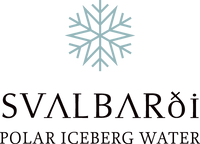Our immediate actions are saving 100kg of the North Pole ice cap for every bottle sold besides for using our resources to educate the world on the precarious state of the Arctic and Svalbard
The natural yearly balance of ice in Svalbard is being thrown off by global warming. The roughly 5 billion cubic metres of icebergs that naturally calve off the glaciers that cover 60% of Svalbard every year are normally replenished through winter snow. Instead, because of climate change they are losing more ice than can be replaced. The permafrost is melting and the seas are not freezing as much, threatening polar bears and other wildlife.
Our long-term environmental plan is to turn all of Svalbard into a carbon-negative region that will net remove greenhouse gases from the atmosphere. Which will also set an example that if the world's northernmost town in an isolated corner of the Arctic can remove CO2 with local resources, anyone can.

This is why one of the key reasons Svalbarði exists is to generate revenue to finance projects that will help reverse global warming. The main project supported to date has been for upgraded water infrastructure in Uganda, Malawi, Rwanda, and Eritrea. The project removes the need to boil water with fossil fuels and limited wood in local communities by providing boreholes to more easily access clean water. This prevents both CO2 emissions and deforestation. More details on this certified Gold Standard greenhouse gas prevention project can be read here.
In the first phase of our long-term environmental plan we were Carbon Neutral certified by Natural Capital Partners. We also only gather ice pieces which are about to melt into the sea, and which are too small to be usable by polar bears or seals for hunting or resting. In so doing we are taking a local resource which global warming is about to destroy and instead using it to help solve the problem. We have turned a symptom of the problem into a part of the solution.
Do no harm
Svalbarði utilises only icebergs that would otherwise melt into the ocean causing sea level rise. We are certified Carbon Neutral by supporting improved water infrastructure in Uganda and Malawi and a wind farm in western China to offset all our carbon emissions. Our wooden cap is sourced only from sustainable forests, and the glass bottle is reusable and fully recyclable.
Educate
We use our social media and marketing platforms as tools to teach the public about the importance of the global warming research and mitigation work that is being done in Svalbard. Because Svalbarði is based in the archipelago, we have a front line view of the rapidly changing environment, such as glacial retreat, reduced sea ice, and the challenges facing arctic wildlife like the polar bear, reindeer, and arctic fox. We consider it our duty to help others understand the global impact of what is happening in Svalbard.
Fight back
We partner with Natural Capital Partners to not only achieve certified carbon neutral status, but then go beyond supporting CO2-reducing projects that make us a carbon negative company. In other words, on net we remove CO2 from the atmosphere. With scientists having established that each tonne of CO2 emitted into the atmosphere destroys 3 square metres of the arctic ice cap, we utilize a portion of the revenue from each bottle of Svalbarði sold to preserve 100kg of the ice cap. In other words, by capturing the small iceberg pieces that go into each bottle of Svalbarði right before they would have melted into the sea forever, you are helping save more than 100 times that amount of arctic ice.
One of Europe's last true wildernesses, the Svalbard archipelago is located between 74° and 81° north latitude, and 10° and 35° east, just 1000km from the North Pole. Approximately 60% of the archipelago is covered by spectacular glaciers. Roughly 3000 polar bears inhabit the Barents Sea region Svalbard is in, as well as marine animals, such as whales, walruses and dolphins.



Scientific research is one of the most important activities in the region, with many countries utilising the advantageous location of the Svalbard archipelago to learn more about the Arctic. The local government, as well as the international community, is committed to researching global climate change from the islands. Svalbard’s Global Seed Bank works to protect the world’s food supplies and biodiversity from climate change for future generations.







